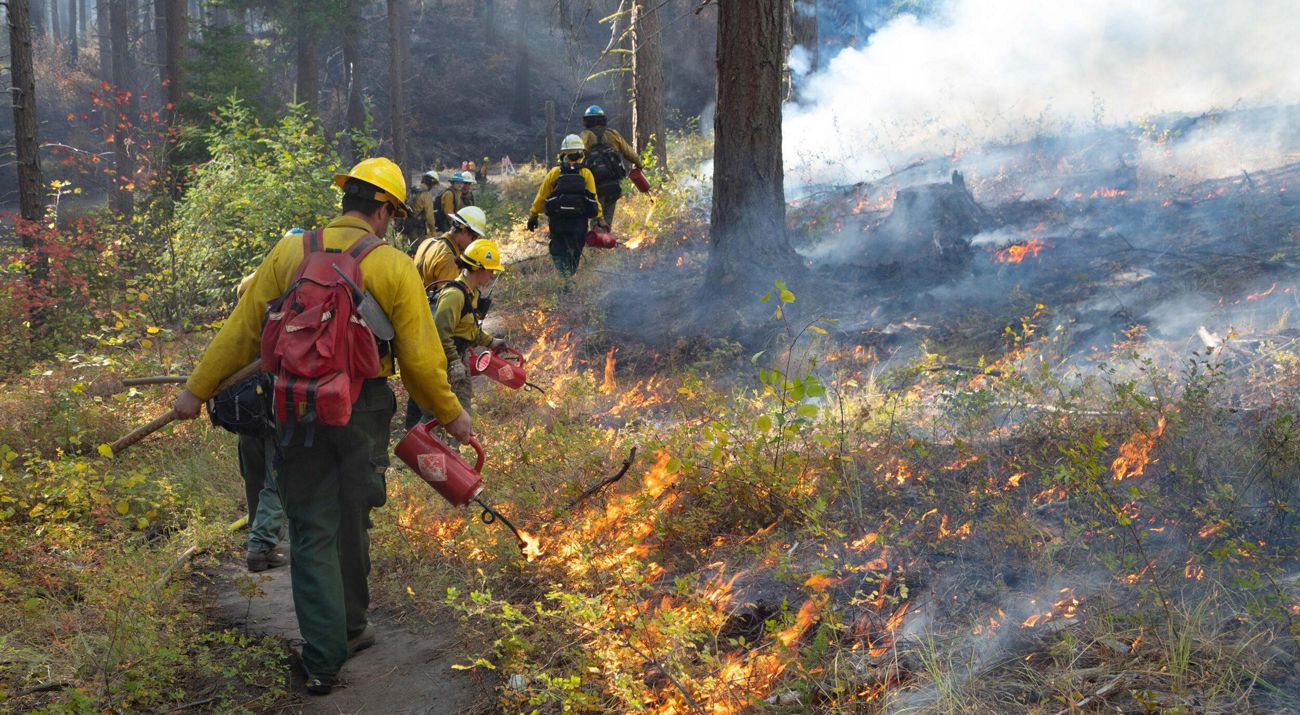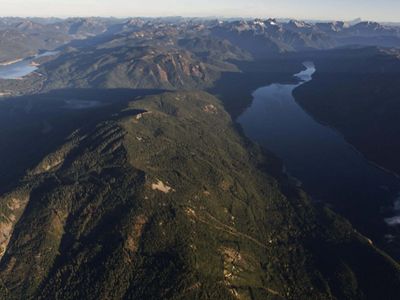Protecting Forests and Communities Across Washington: Climate Commitment Act Investments in Wildfire Resilience
by Elaine Genest, freelance writer

Sponsored by No on 2117 Committee, PO Box 21961 Seattle, WA 98111. Top five contributors Steve and Connie Ballmer, Chris Stolte, William H. Gates, Puyallup Tribe of Indians and The Nature Conservancy. Learn more at no2117.com.
There is no silver bullet to address the threat of catastrophic wildfire. Reducing the risk of wildfire in Washington requires a coordinated and multifaceted approach backed by resources to fund fire mitigation strategies. Government funding, combined with the involvement of local communities, agencies, and organizations, plays a crucial role in implementing proactive fire suppression methods.
Funding for wildfire resilience is at an all-time high as a result of recent state and federal investments. To protect people and nature from the wildfire seasons that are growing longer and more common, it's essential we leverage every dollar available from government funds. That’s why Washington’s Climate Commitment Act (CCA) is an important piece of the puzzle for wildfire resilience. Funding from CCA is already being put to good use, including critical projects for bolstering climate resilience in fire-prone areas across the state like Cle Elum and Spokane.
Quote
This November, many of these wildfire resilience investments will be lost if the initiative to repeal the CCA (Initiative 2117) passes.
Strategies for Wildfire Mitigation
For communities facing growing threats of wildfires and climate-induced challenges, local action makes a world of difference. With substantial funding, communities can implement effective mitigation and adaptation strategies to protect the area from future wildfires.
Prescribed burning is one of these key strategies. Historically, Indigenous communities practiced cultural burns as a natural and effective method for managing forests and reducing the risk of severe wildfires. Using “good fire” helps eliminate excess vegetation that fuels wildfires, enhancing forest resilience and supporting biodiversity.

But fire suppression policies in the 20th century and banned Indigenous cultural burns, lead to buildup of dead vegetation and increased wildfire risks. Now, science-informed forest management practices are bringing fire back to the land. “Prescribed fire not only reduces the risk of severe wildfires but also enhances the health of our forests,” says Sami Schinnell, co-chair of the Washington Prescribed Fire Council and former cooperative fire director for TNC. “It's fulfilling to see how prescribed burns are being used to create safer, healthier natural spaces for communities and future generations.”
Other wildfire mitigation tactics that help reduce wildfire risks and promote forest health include mechanical thinning and strategic fuel breaks. Thinning involves removing excess vegetation and smaller trees to reduce the amount of combustible material in forests. A fuel break is a carefully planned and maintained strip of land where vegetation is reduced or removed to act as a barrier that slows down or stops the spread of wildfires.

Another strategy is to create defensible spaces around residential areas and critical infrastructure. Defensible spaces significantly reduce the potential for property damage and other harm during wildfire events. These buffer zones allow communities to respond to emergencies more effectively and evacuate when necessary, creating safer living conditions for residents in fire-prone areas.
With funding from the CCA and other recent state and federal efforts, local communities have access to tens of millions of dollars to support effective strategies for mitigating extreme wildfires. So far, this includes $800,000 to train Tribal communities in wildland fire management, $2 million for fuel reduction and prescribed fire on lands managed by the Washington Department of Fish and Wildlife, and $10 million for Department of Natural Resources forest treatments.
If Initiative 2117 were to pass, local communities and landowners in high-risk areas would lose out on millions in needed funding to prepare for wildfire with proactive safety measures and proven mitigation practices.
Climate Funding in Action: Cle Elum Ridge
In Central Washington, a collaborative effort is underway to create a strategic fuel break on Cle Elum Ridge. The ridge and surrounding communities are at high risk of wildfires due to dense forests. Abundant dead vegetation present a significant wildfire hazard, especially since previous suppression policies did not allow for prescribed burns. The project is a cross-boundary partnership involving the Central Cascades Forest (managed by TNC), the City of Roslyn, and several private landowners. This effort directly responded to the Jolly Mountain Fire in 2017, which burned over 36,000 acres, threatened local communities, and left residents determined to be better prepared for future wildfires.

The Cle Elum Ridge fuel break is designed to mitigate the effects of severe wildfire conditions, such as the dry east winds that fueled the Jolly Mountain Fire, by slowing down wildfire spread and making it more manageable. It also provides firefighters a safe and effective area to begin their containment efforts. With support from the CCA and forest treatments like prescribed burning and mechanical thinning on nearby state forest lands, this locally-driven fire mitigation effort is creating a more resilient community in the face of climate change.
The Future of Climate Action and Resilience
Washington is in a unique moment to take advantage of historic levels of funding for wildfire prevention and community-lead resilience. “The state has already committed to hundreds of millions in forest health and wildfire resilience funding thanks to HB 1168, passed in 2021, and federal investments from the Inflation Reduction Act,” says Schinnell. “But with over a million acres of forests across our state in need of treatment, it's essential that we leverage every dollar to meet the scale necessary to protect our local communities from wildfire risks. The CCA has already generated over $30 million in funding for forest health and wildfire resilience, and that's just in the first two years of cap-and-trade auction revenues.”
The impact of state and federal funds is profound, driving tangible improvements in wildfire prevention and ensuring Washington’s Climate Commitment Act remains a source of wildfire resilience funding is essential for community resilience across the state. Through additional strategic investments, coordinated efforts, and a commitment to sustainable practices, we can protect our communities and natural landscapes from the increasing threats of climate change by voting No on Initiative 2117.
Stay in the Loop
Get conservation stories, news and local opportunities from where you live.



